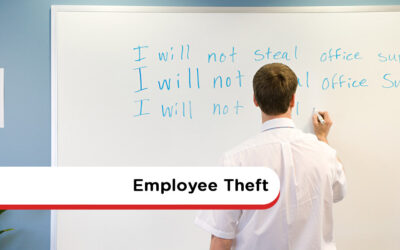Negative, grumpy, and complaining. Everyone has a story to tell about working with a difficult colleague. The tough task of handling workers with poor attitudes falls to managers and HR professionals. Often that task is made all the trickier because these staffers are good at their jobs. Aside from their bad attitude, they may perform their responsibilities well. However, you need to tackle it as these chronic complainers have a toxic effect on the whole team. Over time, the irreparable damage could see colleagues leaving and customers switching to the competition. Here we share five practical tips on how to handle employees with bad attitudes.
How To Identify Employees With Bad Attitudes
Let’s start by looking at the behaviors typically displayed by employees with bad attitudes. You may think negative workers are easy to spot. However, they can fly under the radar of managers, doing most of their complaining within the team. Here are some of the tell-tale signs of employees with bad attitudes.
- Constant griping about the company and management or their workloads
- Talking behind colleagues’ backs
- Gossiping and spreading rumors about team members
- Exaggerating issues and undermining the authority of managers with persistent criticisms
- Pointing the finger at co-workers for their mistakes
- Indulging in office politics and pitting colleagues against each other
It’s important to remember that every employee will have a bad day from time to time. Occasional disagreements are to be expected in any team. The difference is employees with bad attitudes display these behaviors daily.
Likewise, make sure you distinguish between serial complainers and those workers offering genuine feedback. In one-to-ones or project meetings, employees will sometimes provide constructive feedback that may be negative. Don’t confuse these workers using formal feedback procedures with ones who have serial bad attitudes.
Why Do Employees Develop Bad Attitudes?
Before tackling disruptive behaviors, it’s vital to understand why employees’ attitudes can nose-dive. Every worker is different, and often there’s no one single cause. The following are some common triggers you need to know about.
Poor Employee Engagement
Difficult employees may be disengaged and bored at work. Consider reviewing your employee engagement strategy to ensure you actively engage with the workforce.
Mental Health And Wellbeing
The uncertainty caused by the pandemic has seen an increased emphasis on employee wellbeing. Remote workers could be experiencing loneliness and isolation, which is manifesting in negative attitudes. Other workers may be suffering from increased anxiety and burnout. Check out our post on employee wellness for steps you can take.
Lack Of Recognition
Some workers develop bad attitudes because they feel undervalued. They may believe their contributions are not recognized enough. A culture of appreciation is vital to a positive working environment. It helps to keep team morale high and ensures in-fighting is minimized. Our blog on employee motivation has lots of practical advice on recognizing and rewarding employees.
Conflict Between Team Members
Sometimes, colleagues in a team just can’t get along. And that is often the root cause of bad attitudes. Managing chronic complainers who also have personal disagreements is challenging. You need to stay neutral and rise above office politics while also finding a fair resolution. We have put together some strategies to overcome remote team conflict. Many of these are also relevant to office-based teams.
How To Handle Employees With Bad Attitudes: 5 Practical Strategies
Taking action to tackle employees with bad attitudes is critical. It’s natural to want to avoid tough conversations with employees. However, left unchecked, negativity can quickly spread to the whole team. These acidic personalities impact morale and productivity. And they can even affect the customer experience and your brand reputation. Therefore, early intervention is vital. Managers need to be proactive and deal decisively with workplace negativity.
Here are some practical strategies to help you handle employees with bad attitudes.
1. Record Examples Of Bad Attitude
If you suspect an employee has developed a bad attitude, the first step is to document specific examples. Confronting a chronic complainer with a vague notion of their ‘bad attitude’ is unlikely to lead to positive outcomes. You should back up your discussions with actual examples of how the worker’s negativity has affected the team. Examples could include disrespectful emails, unhelpful comments made in meetings, challenges to management, or unwillingness to cooperate. Ask yourself the following questions to guide you.
- What is the impact of the employee’s bad attitude?
- How have their actions affected co-workers and the achievement of team goals?
- How has the worker’s attitude strayed from the company’s expectation of employee behavior?
2. Schedule A Private Meeting
The next step is to talk privately with the staff member. It’s a good idea to include an HR representative or supervisor. This will help the employee understand the problem is felt by the whole team and is not just a personal attack.
Talking to someone about their bad behavior is never easy. Here are some tips to help manage the conversation.
- Try to ensure the employee feels comfortable. Keep calm and be tactful. Acknowledging this is a difficult and awkward conversation at the outset helps set the right tone. The worker will be less likely to feel under attack.
- Be positive. Frame your discussions as an opportunity for the worker to improve their performance. Give examples of positive behaviors and contributions the worker has made to the team. A balanced perspective ensures the employee isn’t put on the defensive.
- Be specific. Telling the employee their lousy attitude is affecting morale only goes so far. Your message is more likely to hit home if you have real examples. For instance, if a worker has been rude about a colleague, which caused tensions in the team, let the worker know in the meeting. Advise them how they should have behaved in that situation, so they know what’s expected.
- Listen to the employee. Let the worker blow off steam and have a rant. It’s vital to give the employee an opportunity to voice their concerns and makes them feel they have a voice. They may reveal the root cause of their bad attitude, which could be something you can help with. In any case, allowing them to be heard can help improve their bad attitude.
- Use ‘we’ and avoid ‘but’ or ‘however.’ Using the word ‘we’ conveys that the issue is affecting all team members. Some managers believe the best way to deliver uncomfortable feedback is to begin with a positive. You might be tempted to say, ‘Your work is great, but…’. Or perhaps, ‘You’ve been doing a great job’ however…’. Tempting though it is to lead with a compliment, this can anger the employee. They may feel that you can’t say anything nice without turning it into a negative. Instead, use positive feedback to focus on how things need to change to be even better. The discussion shouldn’t be about telling the employee off. It’s more about helping them see the consequences of their bad attitude.
3. Develop An Action Plan
Following your discussions, set out an action plan. Make it clear the specific behaviors you expect to see. And identify benchmarks to demonstrate that changes are taking place. Also, include a timeline and set follow-up meetings to monitor progress. Keeping open the lines of communication is vital for diffusing potential future conflicts.
4. Know When To Say Goodbye
Many employees will be embarrassed and apologetic about their bad attitude. They may not have realized how their actions were affecting others. Often, coaching and support are all that’s needed to get these workers back on track.
Other staff members may have a genuine gripe driving their poor behavior. For example, they may feel undervalued because their salary is below the industry average. Or perhaps they tell you that staff rosters are unfair. As the manager, it’s your responsibility to consider whether these complaints have merit. And if so, you should advise the employee to take up their grievance through formal channels.
Sometimes you will encounter unrepentant or unreasonable staff even though you have tried hard to resolve the situation. In this case, it may be necessary to follow company policies and issue a formal warning. The impact of the employee’s bad attitude may be so destructive that you may even need to let the person go.
5. Avoid Bad Attitudes With A Positive Corporate Culture
Strong company culture can help minimize the potential for employees with bad attitudes. Here are some of the essential elements of a positive company culture that also address common triggers for dissatisfaction.
Promote Two-way Communication
Free-flowing dialogue up, down and across the organization gives employees a voice. They can raise concerns, provide feedback and share insights and ideas. Two-way communication also supports decision-making and productivity. Nowadays, businesses use team chat plus intranet forums and blogs to inform, connect and involve workers.
Enhance Employee Engagement
Companies with high employee engagement rates have lower turnover, increased retention, and higher productivity. Engaged employees are also more motivated and report higher levels of job satisfaction. Employee surveys and pulse checks give workers an organizational voice. While training and development opportunities ensure they feel valued and appreciated.
Value Workers’ Efforts
Praise and recognition are vital to positive company culture. Give credit when it’s due with a thank you email, employee of the month program, or shoutout on IM.
Celebrate Team Achievements
We often fail to pause and celebrate success in the daily grind. A shared team lunch or simple collective pat on the back is incredibly motivating. And it helps foster a ‘we are in this together’ collective sense of purpose.
Promote Employee Wellbeing
With the Great Resignation now a worldwide phenomenon, businesses are taking their responsibilities towards employee wellbeing more seriously. It stands to reason healthy employees are happier, more productive, and high-performing. And employee wellness doesn’t have to break the bank. Onsite or online yoga classes and mindfulness exercises have become popular. Workstation assessments, free health checks, even volunteering programs also contribute to employee wellness.
How To Handle Employees With Bad Attitudes: Quick Summary
You cannot afford to ignore workers with poor attitudes. Like a computer virus that infects all corners of the business, the employee’s negativity also has a devastating impact. Here’s a quick summary of what you need to do.
- Be proactive and decisive. Take early action to stop the problem affecting morale and productivity.
- Keep a record of examples of the employee’s bad attitude and how it’s affected the team.
- Have a private discussion with the individual. Be specific and set out your expectations about acceptable behavior.
- Agree an action plan and monitor progress. Try to work with the individual to resolve the problem. However, be prepared to take formal disciplinary action if you need to.
- Minimize the potential for employees with bad attitudes by promoting a positive corporate culture.
Interested in finding out more? MyHub’s blog has plenty of best practice tips on HR-related issues, including performance management, team collaboration, leadership skills, and much more.
MyHub provides out-of-the-box intranet solutions to businesses worldwide. Our customers come in all shapes and sizes and operate in various industries. Find out why we are so popular with a free demo or 14-day trial.











